
Wetenschap
Nieuw atomair dun materiaal kan de efficiëntie van op licht gebaseerde technologie verbeteren
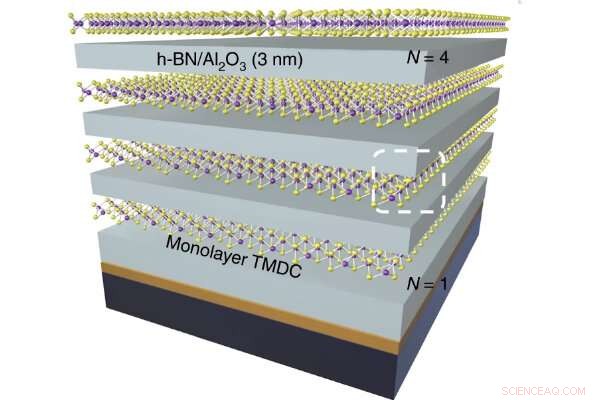
Zogenaamde "tweedimensionale" materialen hebben unieke elektrische en fotonische eigenschappen, maar hun ultradunne vormfactoren bieden praktische uitdagingen wanneer ze in apparaten worden verwerkt. Onderzoekers van Penn Engineering hebben nu een methode gedemonstreerd voor het maken van "superroosters" met een groot oppervlak - gelaagde structuren die 2D-roosters van zwavel en wolfraam bevatten - die koppeling van licht en materie kunnen bereiken. Krediet:Universiteit van Pennsylvania
Zonnepanelen, camera's, biosensoren en glasvezel zijn technologieën die afhankelijk zijn van fotodetectoren of sensoren die licht omzetten in elektriciteit. Fotodetectoren worden efficiënter en betaalbaarder, waarbij hun halfgeleiderchips steeds kleiner worden. Deze miniaturisering dringt echter aan op de limieten die worden gesteld door de huidige materialen en productiemethoden, waardoor een afweging tussen grootte en prestatie wordt afgedwongen.
Er zijn veel beperkingen van het traditionele fabricageproces van halfgeleiderchips. De chips worden gemaakt door de halfgeleiderfilm over de bovenkant van een wafel te laten groeien op een manier waarbij de kristallijne structuur van de film in lijn ligt met die van de substraatwafel. Dit maakt het moeilijk om de film op andere substraatmaterialen over te brengen, waardoor de toepasbaarheid wordt verminderd.
Bovendien wordt de huidige methode voor het overbrengen en stapelen van deze films gedaan door middel van mechanische exfoliatie, een proces waarbij een stukje tape de halfgeleiderfilm aftrekt en vervolgens laag voor laag op een nieuw substraat overbrengt. Dit proces resulteert in meerdere niet-uniforme lagen die op elkaar worden gestapeld, waarbij de onvolkomenheden van elke laag zich in het geheel ophopen. Dit proces beïnvloedt de kwaliteit van het product en beperkt de reproduceerbaarheid en schaalbaarheid van deze chips.
Ten slotte functioneren bepaalde materialen niet goed als extreem dunne lagen. Silicium blijft alomtegenwoordig als het materiaal bij uitstek voor halfgeleiderchips, maar hoe dunner het wordt, hoe slechter het presteert als een fotonische structuur, waardoor het minder dan ideaal is in fotodetectoren. Andere materialen die beter presteren dan silicium als extreem dunne lagen, hebben nog steeds een bepaalde dikte nodig om te interageren met licht, wat de uitdaging vormt om optimale fotonische materialen en hun kritische dikte te identificeren om te werken in halfgeleiderchips van fotodetectoren.
De productie van uniforme, extreem dunne fotonische halfgeleiderfilms van hoge kwaliteit van ander materiaal dan silicium zou halfgeleiderchips efficiënter, toepasbaar en schaalbaarder maken.
Penn Engineers Deep Jariwala, assistent-professor in Electrical and Systems Engineering, en Pawan Kumar en Jason Lynch, een postdoctoraal onderzoeker en een doctoraalstudent in zijn laboratorium, leidden een studie gepubliceerd in Nature Nanotechnology dat was precies dat doel. Eric Stach, Professor in Materials Science and Engineering, samen met zijn postdoc Surendra Anantharaman, doctoraalstudent Huiqin Zhang en student Francisco Barrera droegen ook bij aan dit werk. De gezamenlijke studie omvatte ook onderzoekers van Penn State, AIXTRON, UCLA, het Air Force Research Lab en het Brookhaven National Lab, en werd voornamelijk gefinancierd door het Army Research Lab. Hun paper beschrijft een nieuwe methode voor het vervaardigen van atomair dunne superroosters, of halfgeleiderfilms, die zeer licht emitterend zijn.
Materialen van één atoom dik hebben over het algemeen de vorm van een rooster, of een laag geometrisch uitgelijnde atomen die een patroon vormen dat specifiek is voor elk materiaal. Een superrooster bestaat uit roosters van verschillende materialen die op elkaar zijn gestapeld. Superroosters hebben volledig nieuwe optische, chemische en fysische eigenschappen waardoor ze geschikt zijn voor specifieke toepassingen zoals foto-optica en andere sensoren.
Het team van Penn Engineering maakte een superrooster, vijf atomen dik, van wolfraam en zwavel (WS2).
"Na twee jaar onderzoek met simulaties die ons vertelden hoe het superrooster zou interageren met de omgeving, waren we klaar om het superrooster experimenteel te bouwen", zegt Kumar. "Because traditional superlattices are grown on a desired substrate directly, they tend to be millions of atoms thick, and difficult to transfer to other material substrates. We collaborated with industry partners to ensure that our atomically thin superlattices were grown to be scalable and applicable to many different materials."
They grew monolayers of atoms, or lattices, on a two-inch wafer and then dissolved the substrate, which allows the lattice to be transferred to any desired material, in their case, sapphire. Additionally, their lattice was created with repeating units of atoms aligned in one direction to make the superlattice two-dimensional, compact and efficient.
"Our design is scalable as well," says Lynch. "We were able to create a superlattice with a surface area measured in centimeters with our method, which is a major improvement compared to the micron scale of silicon superlattices currently being produced. This scalability is possible due to uniform thickness in our superlattices, which makes the manufacturing process simple and repeatable. Scalability is important to be able to place our superlattices on the industry-standard, four-inch chips."
Their superlattice design is not only extremely thin, making it lightweight and cost effective, it can also emit light, not just detect it.
"We are using a new type of structure in our superlattices that involves exciton-polaritons, which are quasi-state particles made of half matter and half light," says Lynch. "Light is very hard to control, but we can control matter, and we found that by manipulating the shape of the superlattice, we could indirectly control light emitted from it. This means our superlattice can be a light source. This technology has the potential to significantly improve lidar systems in self-driving cars, facial recognition and computer vision."
Being able to both emit and detect light with the same material opens the door for more complicated applications.
"One current technology that I can see our superlattice being used for is in integrated photonic computer chips which are powered by light," says Lynch. "Light moves faster than electrons, so a chip powered by light will increase computing speed, making the process more efficient, but the challenge has been finding a light source that can power the chip. Our superlattice may be a solution there."
Applications for this new technology are diverse and will likely include high-tech robotics, rockets and lasers. Because of the wide range of applications for these superlattices, the scalability is very important.
"Our superlattices are made with a general, non-sophisticated process that does not require multiple steps in a clean room, allowing the process to be repeated easily," says Kumar. "Additionally, the design is applicable to many different types of materials, allowing for adaptability."
"In the tech world, there is a constant evolution of things moving toward the nanoscale," he says. "We will definitely be seeing a thinning down of microchips and the structures that make them, and our work in the two-dimensional material is part of this evolution."
"Of course, as we thin things down and make technology smaller and smaller, we start to interact with quantum mechanics and that's when we see interesting and unexpected phenomena occur," says Lynch. "I am very excited to be a part of a team bringing quantum mechanics into high-impact technology." + Verder verkennen
Researchers engineer magnetic complexity into atomically thin magnets
 Kijken naar atomen die bewegen in hybride perovskietkristallen onthult aanwijzingen voor het verbeteren van zonnecellen
Kijken naar atomen die bewegen in hybride perovskietkristallen onthult aanwijzingen voor het verbeteren van zonnecellen Omzetting van hernieuwbare grondstoffen op platina vertoont onverwacht gedrag
Omzetting van hernieuwbare grondstoffen op platina vertoont onverwacht gedrag Gebruik witte azijn en isopropylalcohol
Gebruik witte azijn en isopropylalcohol Poreus silica beschermt de nikkelkatalysator
Poreus silica beschermt de nikkelkatalysator Eigenschappen en toepassingen van staal
Eigenschappen en toepassingen van staal
 Neerslagmetingen in heel Duitsland via het mobiele netwerk
Neerslagmetingen in heel Duitsland via het mobiele netwerk Desinvestering van fossiele brandstoffen zal de CO2-uitstoot verhogen, niet verlagen
Desinvestering van fossiele brandstoffen zal de CO2-uitstoot verhogen, niet verlagen Toename van tropische cycloonregens kan helpen bij rampenplanning
Toename van tropische cycloonregens kan helpen bij rampenplanning Blijven of gaan? Vulkaankrachten keuze voor iedereen in de uitbarstingszone
Blijven of gaan? Vulkaankrachten keuze voor iedereen in de uitbarstingszone Nieuw onderzoek belooft het sneeuwpakket te voorspellen nog voordat de sneeuw valt
Nieuw onderzoek belooft het sneeuwpakket te voorspellen nog voordat de sneeuw valt
Hoofdlijnen
- Genetische studie onthult evolutionaire geschiedenis van dingo's
- 3 geredde dolfijnen zwemmen vrij uit het Indonesische heiligdom
- Hoe kan het gras op de greens op een golfbaan zo perfect zijn?
- Verschil tussen aangesloten en losgemaakte Ribosomes
- Hoge opbrengst, eiwit met sojabonengen
- Vissen krimpen als de temperatuur van de oceaan stijgt
- Transformatie, transductie en vervoeging: gentransfer in Prokaryotes
- De herfst is de beste tijd om nestkasten voor kerkuilen schoon te maken
- Anatomy & Physiology Project Ideeën
- Nanodeeltjes creëren warmte uit licht om elektrische activiteit in neuronen te manipuleren
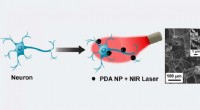
- Waarom magnetisme in bepaalde materialen anders is in atomair dunne lagen en hun bulkvormen?
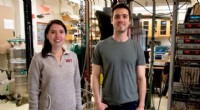
- Begrijpen hoe kanker zich verspreidt:Nanotech eencellige monitoringtechniek zou inzichten kunnen geven
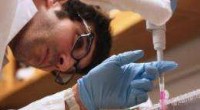
- Superieure ruiscontrole met behulp van grafeen
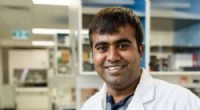
- Wetenschappers maken apparaat dat een licht pincet gebruikt om virussen te vangen en te verplaatsen
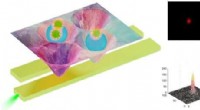
 Intel zegt dat chips voor het oplossen van fouten die dit jaar worden uitgebracht
Intel zegt dat chips voor het oplossen van fouten die dit jaar worden uitgebracht Apparaat ter grootte van een duim ruikt snel een slechte adem
Apparaat ter grootte van een duim ruikt snel een slechte adem Luchtkwaliteitsinstanties kunnen gemakkelijker ademen over de huidige emissieregelgeving
Luchtkwaliteitsinstanties kunnen gemakkelijker ademen over de huidige emissieregelgeving Onderzoekers hopen toekomstige epidemische voorspellingen te verbeteren
Onderzoekers hopen toekomstige epidemische voorspellingen te verbeteren Wat is het verschil tussen elektronische geometrie en moleculaire vorm?
Wat is het verschil tussen elektronische geometrie en moleculaire vorm?  Waarom sommige steden en staten afzien van gezichtsherkenningstechnologie
Waarom sommige steden en staten afzien van gezichtsherkenningstechnologie Gammastraling-telescopen onthullen een hoogenergetische val in het centrum van ons melkwegstelsel
Gammastraling-telescopen onthullen een hoogenergetische val in het centrum van ons melkwegstelsel James Lovelock, bedenker van de Gaia-ecologietheorie, sterft om 103 uur
James Lovelock, bedenker van de Gaia-ecologietheorie, sterft om 103 uur
- Elektronica
- Biologie
- Zonsverduistering
- Wiskunde
- French | Italian | Spanish | Portuguese | Swedish | German | Dutch | Danish | Norway |

-
Wetenschap © https://nl.scienceaq.com

